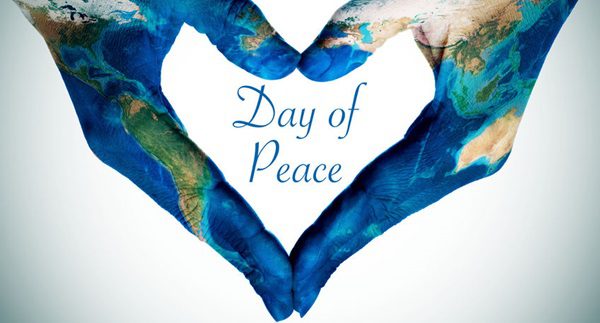
The news is overwhelming. Here in the United States, Terence Crutcher, an unarmed black man, was murdered by police over the weekend. Protests erupted yesterday in North Carolina after another unarmed black man, Keith Lamont Scott, was murdered by police. The protests apparently turned violent, with people throwing rocks at cars and breaking into a Walmart.
Then there’s Syria. A precarious ceasefire was brokered last week. Just days into the ceasefire, the United States targeted ISIS troops with bombs. Unfortunately, the US bombs didn’t land on ISIS; they landed on Syrian fighters. US officials claim that Russian forces retaliated by bombing a UN convoy bringing food supplies to Allepo. Both sides are accusing the other of betraying the ceasefire agreement. Tragically, both sides are right.
If you are a news junkie like I am, you are probably feeling overwhelmed by the violence in the world. The mimetic, or imitative, cycle of violence seems to have no end in sight. It’s easy to fall into despair as violence leads to an escalation of violence.
The Politics of Violence
Our political structure is based on violence. Politics seeks to designate an enemy, an evil “other” that needs to be destroyed. Political rulers, from Russia to Syria to Iran to the United States, all have one thing in common: they each claim to use violence in the name of peace. They believe that defeating their enemies will bring peace.
But violence doesn’t bring peace. It only brings more violence. Even when violence seems to “work” in the short term, in the long term it only works to instill the belief that violence is an appropriate method for creating peace.
The problem is that violence does “work.” But only in the short term. According to the founder of mimetic theory, René Girard, this is the seductive character of violence and it’s been seducing humanity from the very beginning of human culture. In fact, culture was founded on the temporary peace and unity that emerged from an act of violence. Violence and war have always united people. And once a common enemy is sacrificed or murdered, a seductive sense of peace descends on the community. That sense of peace is seductive because it feels good. It seems as though our violence was good, even sacred. But in reality, the act of violence never solved the actual problem of violence. So when the problem recurs, another scapegoat is blamed for our problems and the pattern of violence continues.
The Politics of Peace
Yesterday was the International Day of Peace. It’s a day that calls us into a true and sustaining peace. The methods of violence to create peace will never bring true peace. Defining an “other” as the enemy will not work, either. We need a different kind of political structure.
And yet, it seems as though politicians can’t move away from designating an enemy. In order for us to have true peace, we must begin to designate the correct enemy. And here’s where mimetic theory has important insights for peace.
I’ll quote from Girard’s friend and collaborator Jean-Michel Oughourlian. He writes in his book Psychopolitics
Politics must take note of the fact that its essence is also its duty: designate the enemy. When it designates terrorism, global warming, poverty, hunger, and so on, it must understand that what it is designating are not enemies but dangers. Scientists and researchers in all disciplines must be roused into action to try to find solutions to these problems. But politics must, in my opinion, clearly designate a precise, known, clearly designated enemy that is obvious to each of us and that underlies all of these problems: ourselves. The greatest sages, wise men, and philosophers have all said something similar, each in their own way … This is not a utopia. This is reality and it is unavoidable; we must force ourselves to accept it if we want to avoid the end of the world.
That is the apocalyptic warning. If we continue to designate enemies outside of ourselves, we will doom ourselves to violent destruction. The only way to avoid that scenario, and to live into peace, is to take responsibility for the enemy within each of us.
Image: Copyright: nito500 / 123RF Stock Photo
Stay in the loop! Like Teaching Nonviolent Atonement on Facebook!











